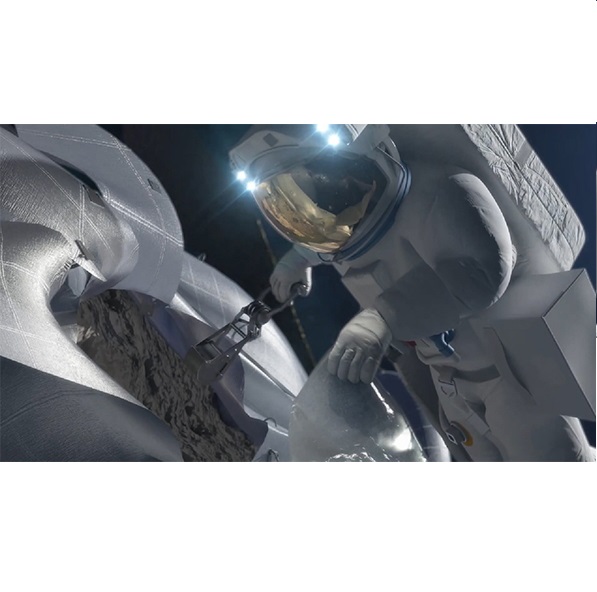 In 2011, the International Space Exploration Coordination Group (ISECG) formulated a shared Global Exploration Strategy providing, in two different mission scenarios, the guidelines for the next decades manned and unmanned space exploration activities.
In 2011, the International Space Exploration Coordination Group (ISECG) formulated a shared Global Exploration Strategy providing, in two different mission scenarios, the guidelines for the next decades manned and unmanned space exploration activities.
The ‘Asteroid Next’ challenging mission scenario foresees two human visits of a Near-Earth Asteroid (NEA) up to 2035. Most of the key capabilities and technologies have been identified, but some of them shall be more investigated. For instance, in order to enable humans to effectively complete in-situ mission objectives by guaranteeing the most suitable access, in-space destinations (e.g. NEAs) systems shall be more deeply studied.
In the described frame, the NEA Exploration Crew Vehicle tobe designed would represent a multiple destinations and related tasks manned space system, able to explore different small bodies and free flying in their proximity. The multidisciplinary project mainly focuses on mission analysis and design, as well as on ergonomics evaluation of the interior spaces for a baseline design of this vehicle. The two teams worked on two different mission concepts, but with a common aim, i.e. to maximise the scientific return of a human mission to a planetary body such as asteroid 1999JU3. The vehicles that they conceived have different dimensions, and this affects their pressurization, as well as the number of astronauts they can carry: consequently, the concept of operations will vary according to the above-mentioned features.
The innovative character of such missions is indeed confirmed by their quick advancement in the state of the art. For example, ESA is looking to the future of space exploration in terms of advanced concepts designed to explore, prepare and help humans in the very harsh conditions found in deep space environment. A group of scientists from the Keck Institute or Space Studies in California thought of a robotic asteroid capture vehicle, which would enable to grab a small asteroid and anchor it to a convenient point in space, like one of the Earth-Moon Lagrangian points. This would save the long time necessary for the astronauts to reach the asteroid, and the scientific study closer to home would benefit from an environment that is less hostile than that found in deep space. Moreover, the role of a deep space mission would be paramount in a long-range human exploration strategy. Among the various pathways to Mars, NHEC would certainly contribute to the integration of robotic and human missions, to the preliminary development of new space systems and the incorporation of technologies still to be enhanced, and to the management of human performance risks.
A multidisciplinary approach is maintained throughout the project, in order to simultaneously deal with all the issues that the design task asks to solve. The European Space Agency was the principal stakeholder to be identified for further development of the present mission, since its interest in building a sustainable human space exploration endeavour is continuously growing.
Principal academic tutors
Paolo Maggiore, Politecnico di Torino – Dept. of Mechanical and Aerospace Engineering
Academic tutors
Michèle Lavagna, Politecnico di Milano – Dept. of Aerospace Engineering
Nicole Viola, Politecnico di Torino – Dept. of Mechanical and Aerospace Engineering
Andrea Messidoro, Politecnico di Torino – Dept. of Mechanical and Aerospace Engineering
External institutions
Thales Alenia Space – Italia
Camera di Commercio di Torino
External tutors
Eugenio Gargioli
Thales Alenia Space
Team A members
Lorenzo Ferrario, Space Engineering, Politecnico di Milano
Giacomo Gatto, Aerospace Engineering, Politecnico di Torino [Team controller]
Martina La Vista, Architecture, Politecnico di Milano
Francesco Robotti, Energy and Nuclear Engineering, Politecnico di Torino
Tiziano Fabio Vigano’, Mechanical Engineering, Politecnico di Milano
Team B members
Alessandri, Architecture, Politecnico di Milano
Margherita Censi, Architecture, Politecnico di Milano
Alessandro Ciani, Energy Engineering, Politecnico di Milano
Alessandro Cingoli, Space Engineering, Politecnico di Milano
Chiara Gastaldi, Mechanical Engineering, Politecnico di Torino
Luca Levrino, Aerospace Engineering, Politecnico di Torino, [communication coordinator and team controller]
Ricardo Repenning Bzdigian, Electrical Engineering , Politecnico di Torino
